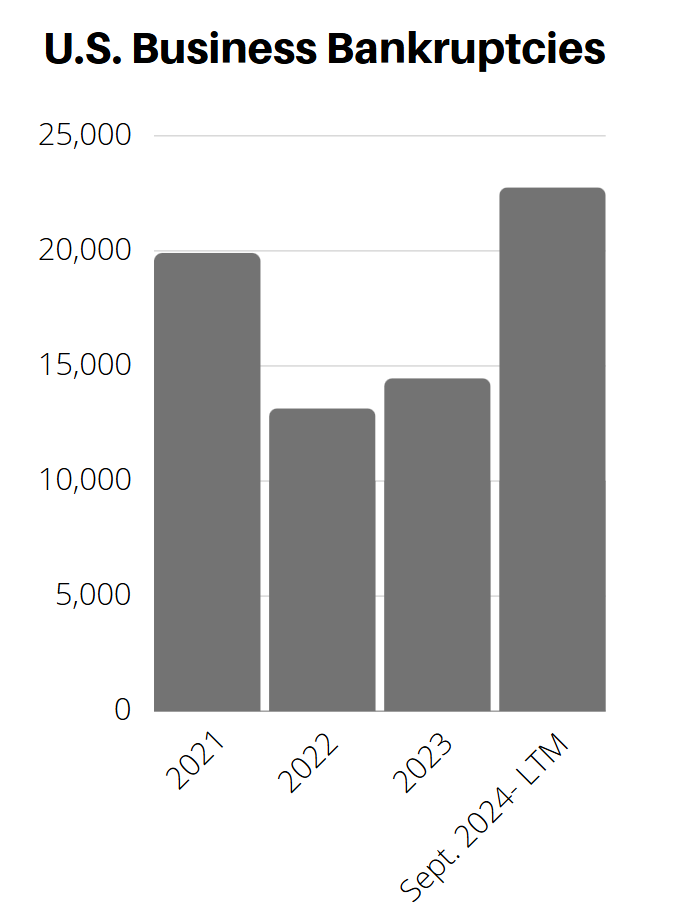Indicators Paint a mixed economic picture
Economic Update
For October, the U.S. manufacturing rate was 46.5% on the ISM Index, 0.7% lower than the September reading. Any reading under 50.0% is contractionary. The continued contraction is attributed to subdued demand and declining output. The unemployment rate held at 4.1% in October, adding only 12,000 jobs. The low number is partially attributed to the Boeing strike and impacts from recent hurricanes. However, revisions lowered previously reported job creation totals by 112,000 for August and September combined.
State of Corporate Credit
S&P Global Ratings reports that a trend of upgrades outnumbering downgrades resumed in September, after an August pause. However, potential fallen angels, which are “a bond issuer that has been downgraded from investment grade to speculative grade”, have risen sharply to 38 companies. Consumer products and health care continue to lead in the US for potential downgrades, highlighting the fact that consumer spending remains under pressure. For the second month in a row, the metals, mining, and steel sector saw the largest increase in positive credit rating bias.
Insolvencies
Commercial Chapter 11 filings increased 16% in October 2024 when compared to the same period last year, on track for a 14-year high. Individual filings increased notably, further impacting consumer spending and demand. Elevated prices, borrowing costs, rising insurance premiums, and demand headwinds will continue to impact consumers and businesses. In Canada, business insolvencies for the 12-month period ending September 31, 2024, increased by 48.6% compared with the same period last year.

Current & Evolving Credit Risks
Steel Pricing
Steel prices in Europe continue to be negatively impacted by China’s excess production relative to its demand and aggressive exports. In the US, steel prices averaged $709 per metric ton in October, up 0.2% from September. Inventory levels are low, indicating that re-stocking will occur when real demand recovers. Weak average selling prices continue to pressure earnings in the steel segment, which for some, is negatively impacting credit metrics.
Private Credit
High risk companies are increasingly extending their runways by utilizing alternative funding sources. Kymera International recently received a private credit loan for $775 million to refinance debt and fund acquisitions. The company was rated B- by S&P prior to the refinancing, which highlights how risky companies are utilizing other funding venues as interest rates remain elevated and banks adopt stricter lending standards.
Global Manufacturing
Demand showed continued weakness in October, with U.S. factories making their strongest cutbacks to buying volumes in nearly 18 months. Europe’s industrial recession persisted, especially in the German automotive sector. However, China’s factory production rebounded, and India maintained strong expansion. Similarly, Canada’s manufacturing activity continued its positive momentum, with PMI rising to a 20-month high of 51.1.



